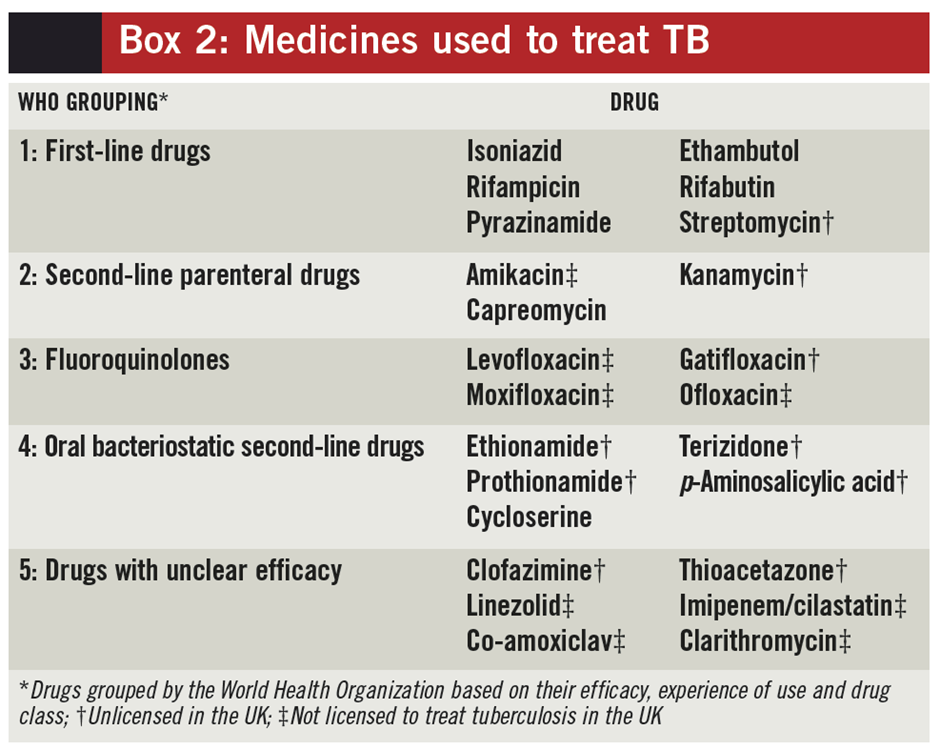A nurse is teaching a client who has active pulmonary tuberculosis about management of medication for the disease. Which of the following statements is appropriate for the nurse to make?
"You should report monthly to have your blood drawn to monitor kidney fusion while taking medication."
"You will need to take two or more medications to treat your disease."
"You will need to undergo tuberculin skin tests every 6 months while taking medication for your disease."
"You should anticipate taking medication to treat your disease for at least the next 3 year”
The Correct Answer is B
Choice A Reason:
"You should report monthly to have your blood drawn to monitor kidney function while taking medication." Is incorrect. While monitoring kidney function might be necessary during tuberculosis treatment due to potential medication side effects, monthly blood draws specifically for kidney function might not be standard. However, periodic blood tests to monitor various parameters, including kidney function, are part of tuberculosis treatment monitoring.
Choice B Reason:
"You will need to take two or more medications to treat your disease." Is correct. Treatment for active pulmonary tuberculosis typically involves a combination of antimicrobial medications to effectively treat the infection and prevent antibiotic resistance. This multidrug therapy is essential to combat the bacteria causing tuberculosis and reduce the risk of treatment failure or relapse.
Choice C Reason:
"You will need to undergo tuberculin skin tests every 6 months while taking medication for your disease." Is incorrect. Tuberculin skin tests are used for screening or diagnosing tuberculosis but are not typically repeated every six months during active treatment for the disease.
Choice D Reason:
"You should anticipate taking medication to treat your disease for at least the next 3 years." Is incorrect. The duration of treatment for active pulmonary tuberculosis varies but is typically shorter than three years. Treatment duration usually lasts several months to a year, depending on the specific medication regimen and the response to treatment.

Nursing Test Bank
Naxlex Comprehensive Predictor Exams
Related Questions
Correct Answer is D
Explanation
Choice A Reason:
Discard the medication if it is yellow is incorrect. While amphotericin B lipid complex can have a yellowish color, it's important to follow specific guidelines provided by the manufacturer or pharmacy regarding any discoloration or changes in the medication's appearance. Discoloration could indicate degradation or contamination, and it's crucial to adhere to specific institutional policies in such cases.
Choice B Reason:
Administer the medication over 2 hr is incorrect. Amphotericin B lipid complex is usually given over a longer duration (e.g., several hours) due to the potential for infusion-related reactions. Intermittent IV bolus administration over 2 hours might not be appropriate and can increase the risk of adverse reactions.
Choice C Reason:
Use a gravity flow set is incorrect. For medications like amphotericin B lipid complex, which often require precise infusion rates and careful monitoring, using an IV infusion pump is usually recommended instead of a gravity flow set. An infusion pump allows for more accurate control of the infusion rate and reduces the risk of errors.
Choice D Reason:
Prime the tubing with 0.9% sodium chloride is correct. Amphotericin B lipid complex should be administered according to specific instructions and precautions. Priming the IV tubing with 0.9% sodium chloride helps ensure that the medication is effectively delivered to the patient and that the medication is not affected by remnants of previous IV solutions in the tubing.
Correct Answer is A
Explanation
Choice A Reason:
Bone loss is correct. Prednisone, a corticosteroid, can lead to decreased bone density (osteoporosis) over extended periods of use, particularly in older adults. This adverse effect increases the risk of fractures and bone-related issues due to the drug's impact on bone health and calcium absorption.
Choice B Reason:
Liver toxicity is incorrect. While prednisone can affect liver function tests in some cases, it is less commonly associated with significant liver toxicity compared to other medications. However, liver function should be monitored during prolonged use.
Choice C Reason:
Hemolytic anemia is incorrect. Prednisone is not typically associated with causing hemolytic anemia as an adverse effect.
Choice D Reason:
Hypoglycemia is not a common adverse effect associated with prednisone use. In fact, prednisone can elevate blood sugar levels and may lead to hyperglycemia or exacerbate diabetes in susceptible individuals.

Whether you are a student looking to ace your exams or a practicing nurse seeking to enhance your expertise , our nursing education contents will empower you with the confidence and competence to make a difference in the lives of patients and become a respected leader in the healthcare field.
Visit Naxlex, invest in your future and unlock endless possibilities with our unparalleled nursing education contents today
Report Wrong Answer on the Current Question
Do you disagree with the answer? If yes, what is your expected answer? Explain.
Kindly be descriptive with the issue you are facing.
